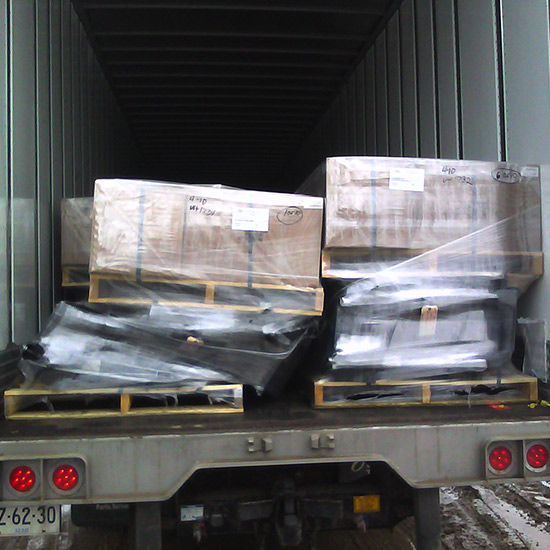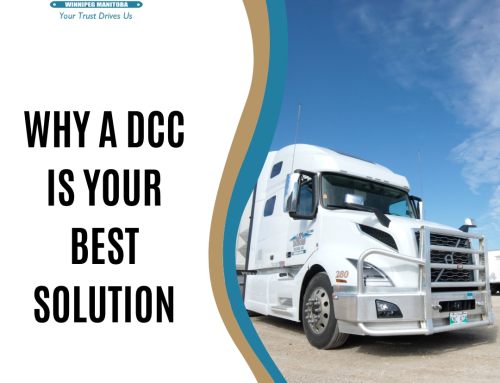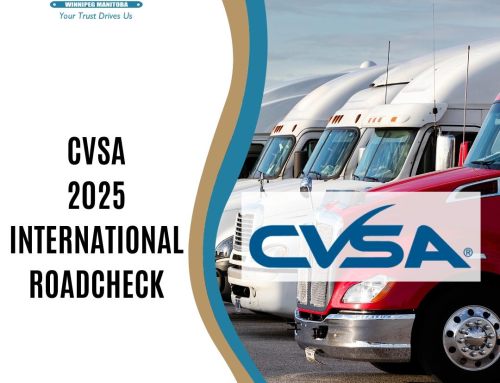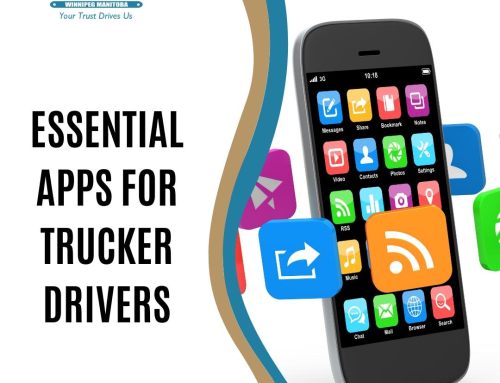 Ensuring that your cargo is secure behind the locked doors of the trailer is important for a variety of reasons. It prevents:
Ensuring that your cargo is secure behind the locked doors of the trailer is important for a variety of reasons. It prevents:
- Damage to our clients’ freight;
- Loads from shifting; and
- Loose objects from falling from the vehicle in a collision.
Improperly secured freight is also a DOT Violation that can lead to hefty fines, go against your driver’s abstract report and against your company’s CSA score.
Unsecured freight is also a workplace hazard that results in thousands of injuries every year. The most common cause of injury truckers face is loose freight falling onto them. The worst of these injuries often happen when drivers open the trailer doors, and the freight topples out. There is no way for an unsuspecting driver to prepare for the freight falling from the trailer.
The Only Way to Avoid Injury is to Secure the Load
Ultimately your safety and your ability to be compliant with DOT Securement regulations rest on your shoulders. Whenever possible, you should be involved in the loading process to ensure that shippers are loading your trailer properly and securing the cargo. It is also a good idea to ensure that you have cargo securement devices (load locks, load bars, or load straps) available in case they are not provided by the shipper.
Always verify that the load is safely secured before leaving the shipper, double check securing equipment is properly positioned. When possible stop and verify that the load is secure within 50 miles of leaving the shipper. It is also suggested that the load be checked every three hours or 150 miles, whichever occurs first, and during your pre-trip inspection.
If you have not been able to visually confirm that the load has been secured, you should be very careful when opening the trailer doors. This is particularly important with sealed loads because you have no way of knowing how the freight was stacked. Another important tip is to never open both trailer doors at once. If you are opening the trailer properly – standing to the left of the right rear door and opening it slowly, while looking inside before swinging the door wide open – you will be better prepared to get out of the way if anything starts falling.
Tips for Securing Freight
- Check load platform, bodywork, and cargo securing equipment are sound and serviceable. If there are any problems, they should be reported to the maintenance department right away.
- Secure cargo so that it cannot move, roll over, wander because of vibrations, fall off the vehicle, or tip. The securing equipment must withstand the conditions of the journey, such as bad roads and weather conditions.
- The strap or cargo net Working Load Limits (WLL) must be equal to or greater than one half (1/2) the load being secured.
- For cylinders and liquid containers, do not use chain binders or binders without straps. Snap binders are safety hazards because of the possibility of snap back.
- For palletized loads, verify that pallets are properly placed on the truck bed in close proximity to anchor points and secured.
- For loose, smaller items that are difficult to strap in place, use a multi anchoring point cargo net to cover and secure the entire load. Cargo nets are also good for securing just about any load of any size and weight within its WLL.
- Ratchet assemblies or cargo nets should not protrude over the edge of the pallet to prevent abrasion from friction. The load should not exceed pallet capacity.
- Evaluate the vehicle load capacity and the weight of the load; the heaviest items should be positioned in the center, over the wheels, while lighter loads should go to the rear of the vehicle.
Drivers need to be aware of the laws and their responsibility to properly secure every load being transported. This is as much a personal safety issue as it is a compliance matter. Any injuries that occur from improperly secured freight affect you, not the shipper, so it is important to communicate the safe loading and securement of freight to ensure that you don’t run into any problems. If you experience any problems with a shipper during the loading process of the freight, you should contact your dispatch or drivers service department before you leave the dock.





